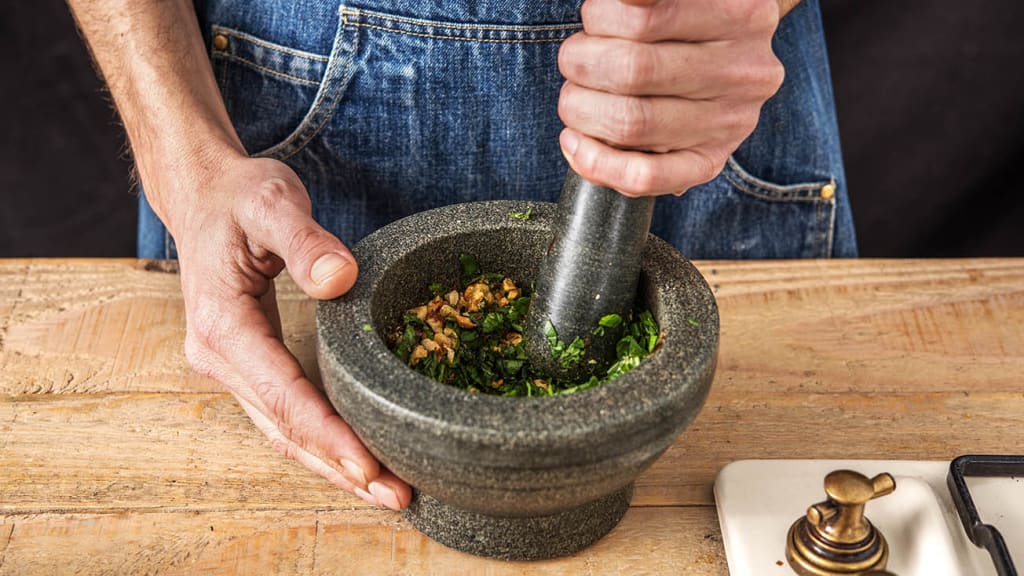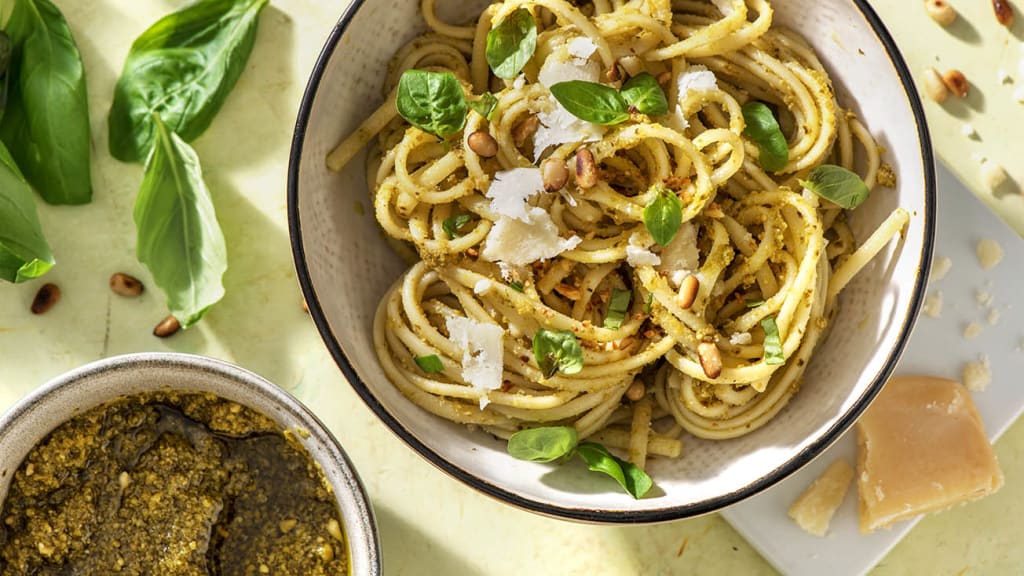Pesto
Pesto
Originating in Genoa, pesto is a versatile Italian sauce made from fresh basil, pine nuts and Parmesan cheese. It’s a delicious accompaniment to many dishes.
PESTO NUTRITIONAL INFORMATION & HEALTH BENEFITS
A 100g portion of pesto contains 534 calories as well as 50g of fat, 12% of which is saturated and 30% is monounsaturated. Although high in both calories and fat, this sauce also contains many beneficial nutrients, and a little goes a long way. Consuming it in moderation can make it a healthy addition to your diet, and since the fat content in the sauce is mostly unsaturated, this promotes a healthy heart.
In the same portion, this sauce contains 56 IU of vitamin A, which supports healthy vision and 6mg of vitamin C, which acts as an antioxidant and tissue-builder. In addition, there is 2.2mg of iron and 588mg of calcium. Iron supports our red blood cell count and calcium builds strong bones. That's not all, because pesto also contains a lot of protein, with 18g per 100g. The fresh basil in the sauce boosts the number of flavonoids, which help to maintain a healthy cell structure and combat free radicals.

HOW TO STORE PESTO

PESTO TIPS, TRICKS & HACKS
The best advice for how to prepare pesto is to use a blender or food processor when making it fresh as opposed to a pestle and mortar, which is much harder work. Blend together fresh basil leaves, pine nuts and peeled garlic cloves together with Parmesan cheese shavings and olive oil.
A handy tip is that you don't have to stick to these ingredients – experiment with walnuts and cilantro or mint along with Romano cheese as substitutes for the standard ingredients. Anyone with a dairy intolerance can leave out the cheese completely.

Because the sauce is so flavoursome, use it sparingly so the overall effect isn't too overpowering. Try adding some Greek yogurt to your pesto recipes for a creamier and milder taste.
This sauce goes well with many foods, some of which may surprise you. For example, stir a teaspoon into a bowl of tomato soup for added colour and richness. Other foods that pesto will complement and enhance include:
- Chicken – cut in half and spread in the middle before baking
- Fish – combine with butter as a sauce when grilling white fish
- Pasta – stir through your favourite pasta dishes
- Bread – spread as a sandwich topping with tomato
- Pizza – drizzle over the top with mozzarella
- Lamb – cover the outside in pesto and bake for a delicious crust
PESTO FACTS
The name 'pesto' is the past participle of the Italian verb 'pestare'. This means 'to crush' or 'to pound', which refers to the preparation method for the sauce. Officially, the word is generic for anything that's produced by pounding. In Italy, it relates to several types of pesto, but the Genovese version is the most popular, which is the traditional green paste commonly used in cooking.
Including basil as the main ingredient in the sauce is only a fairly recent occurrence. Although the sauce is thought to date back to Roman times, the inclusion of basil was first documented during the middle of the 19th century when Giovanni Battista Ratto, a gastronomist, published "La Cuciniera Genovese", a book about Italian cooking.
Delicious recipes for you to choose next week
Like what you see? Check out all of our upcoming recipes
VIEW OUR MENU